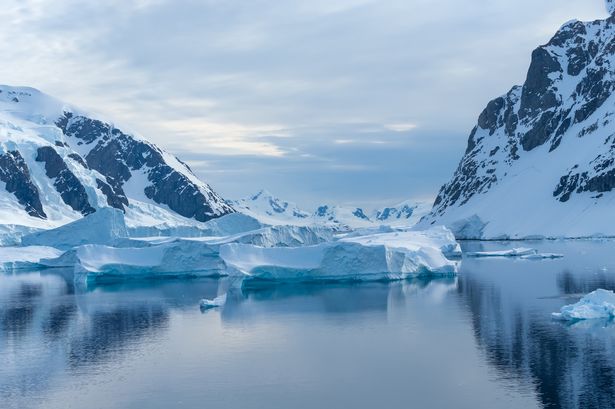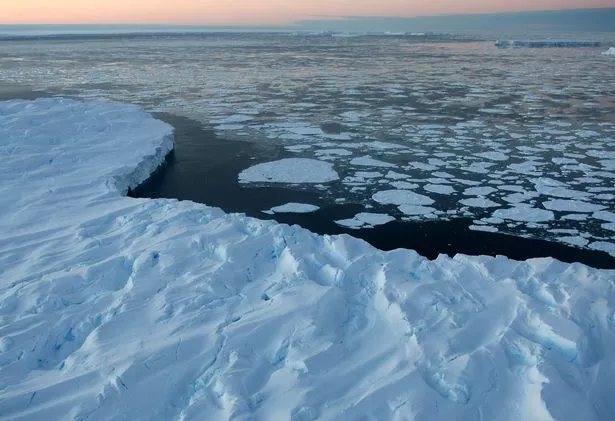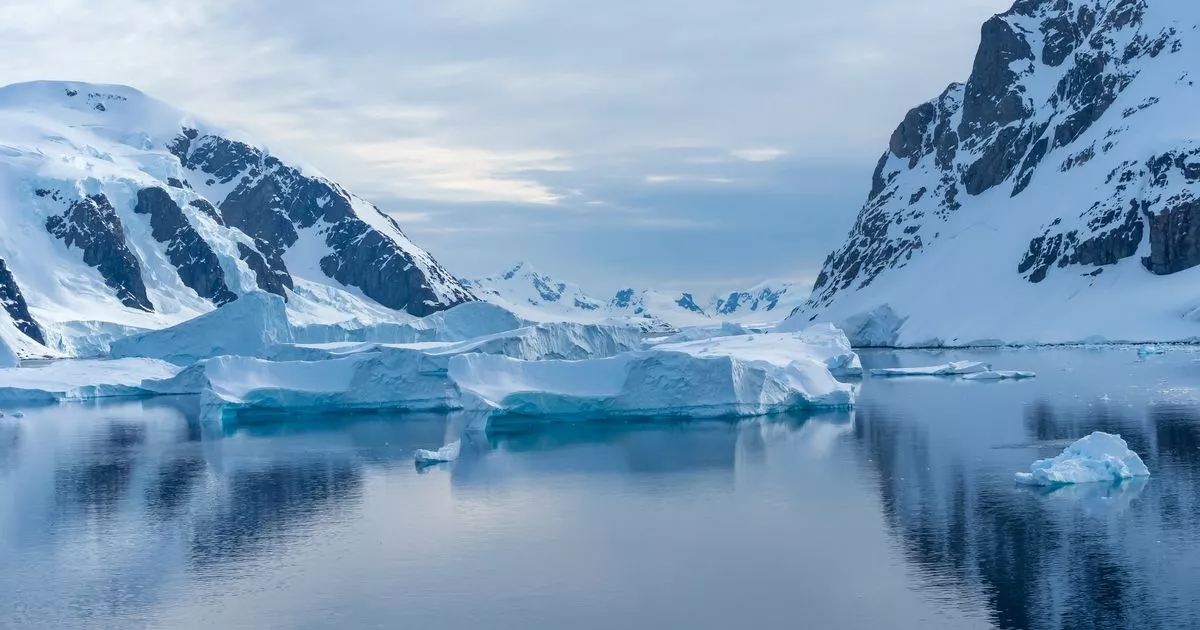The ancient landscape was discovered in Wilkes Land, a remote inland part of East Antarctica, and spanned more than 12,000 square miles An ancient world has been discovered below Antarctica(Image: Getty Images/iStockphoto)
An ancient world has been discovered below Antarctica(Image: Getty Images/iStockphoto)
A mysterious ancient world which has been shielded from view out in the open for over 34 million years has recently been uncovered by scientists. It lies beneath a vast layer of ice in Antarctica, which has uncovered a raft of evidence.
Employing a combination of satellite imagery and ground-penetrating radar technology, experts have exposed evidence of prehistoric river systems that once meandered through what is now an ice-covered wilderness. Scientists have determined that the hidden expanse, situated beneath the surface in Wilkes Land of East Antarctica, covers an area exceeding 12,000 square miles.
Durham University’s Stewart Jamieson, the lead researcher in this intriguing study, described the finding as akin to “uncovering a time capsule”, commenting further: “The land underneath the East Antarctic ice sheet is less well-known than the surface of Mars.”
The research team uncovered geological features indicating an ancient terrain dotted with significant ridges and deep-cut valleys, as reported in the Express.
They discovered three separate elevated areas stretching from 75 to 105 miles in length and up to 53 miles across, divided by extensive valleys plunging nearly 3,900ft and stretching up to 25 miles wide.
 The area is believed to exceed 12,000 square miles.(Image: Getty Images)
The area is believed to exceed 12,000 square miles.(Image: Getty Images)
What sets this East Antarctic ice sheet apart from other glacial bodies is its classification as a “cold-based” glacier according to scientists, it remains frozen to its base, advancing at a sluggish rate and thereby inflicting little erosive impact on the terrain below.
Remarkably stationary, shifting less than 16 feet annually, this sheet has done an exceptional job at preserving the topography beneath.
Professor Jamieson elaborated on the significance of the discovery: “What we find is an ancient land surface that has not been eroded by the ice sheet, and instead it looks like it was created by rivers before the ice came along.”
“It is remarkable that this landscape, hidden in plain sight for many years, can tell us so much about the early and long-term history of the East Antarctic ice sheet,” Neil Ross, professor of environmental geophysics at Newcastle University and co-author of the study, acknowledged.
Around 180 million years in the past, Antarctica was integral to the supercontinent Gondwana, but its eventual breakup set Antarctica adrift towards its current polar setting, becoming distinct from South America and Australia in the process.
This shift instigated the creation of the Antarctic Circumpolar Current, a system that flows clockwise around Antarctica, which cut off the continent and contributed to significant coolin. This resulted in the extensive ice sheets that have become discoverable today.
Even in later warm periods, like the mid-Pliocene approximately three million years ago, the now-uncovered region stayed beneath ice.
Researchers are optimistic that these findings will shed light on how Antarctica may transform with looming climate change scenarios.
Join the Daily Record’s WhatsApp community here and get the latest news sent straight to your messages.
